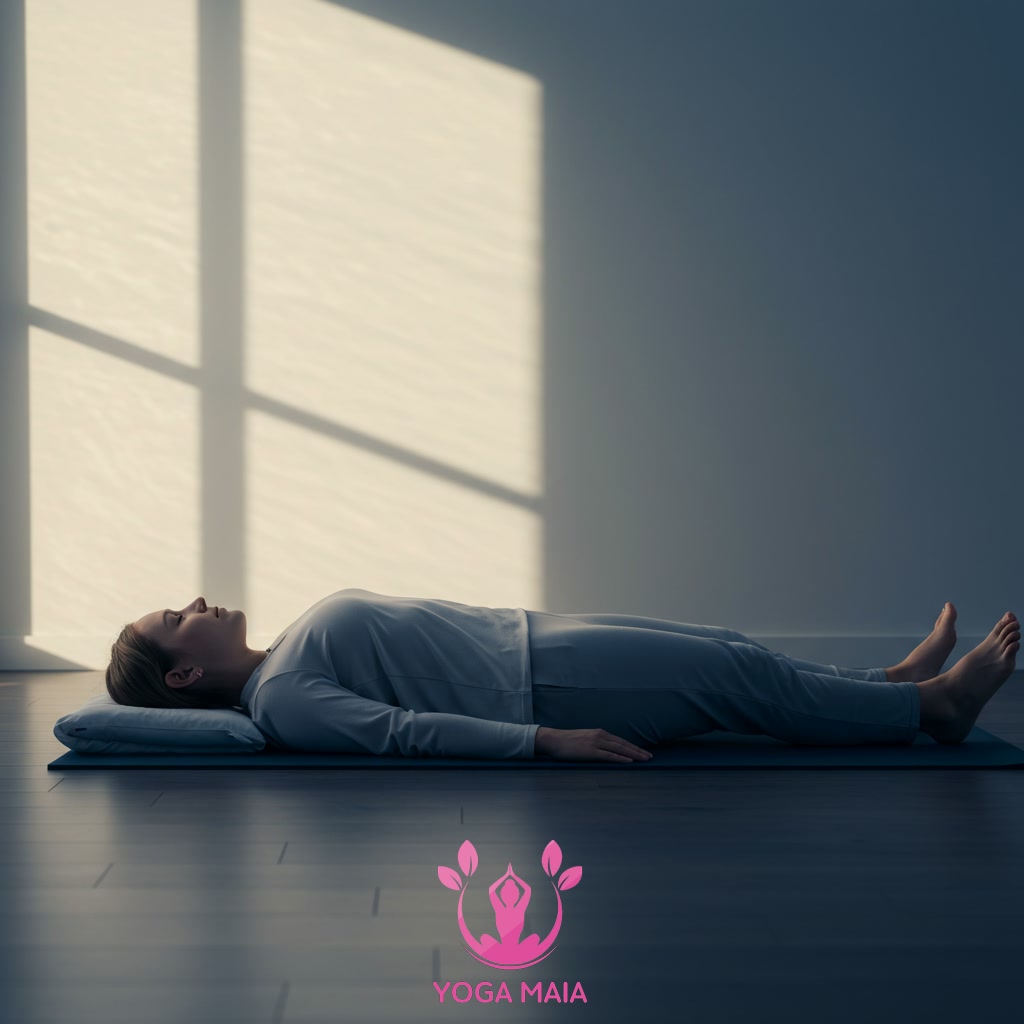Yoga Blog
Yoga Nidra for Deep Relaxation and Energy Restoration: A Guided Practice

This guided Yoga Nidra session offers a pathway to achieving profound relaxation. It is specifically structured to help individuals unwind deeply and release tension. The practice is also intended to support the restoration of energy levels. Engaging with this session can facilitate a state of calm and renewed vitality.
Table of Contents
- Section 1: Introduction to Yoga Nidra: Deep Relaxation and Energy Restoration
- Section 2: Preparing for Your Yoga Nidra Practice
- Section 3: Setting Your Intention (Sankalpa)
- Section 4: Guided Rotation of Consciousness (Body Scan)
- Section 5: Breath Awareness and Physical Sensations
- Section 6: The Visualisation Journey
- Section 7: Integration and Gently Awakening
Section 1: Introduction to Yoga Nidra: Deep Relaxation and Energy Restoration
Welcome to the practice of Yoga Nidra, often translated as ‘yogic sleep.’ This is a powerful technique designed to guide you into a state of profound relaxation, hovering between wakefulness and sleep. Unlike typical sleep, Yoga Nidra involves maintaining conscious awareness while the body and mind enter a deep state of rest. This practice is specifically structured to release physical, mental, and emotional tension that accumulates in daily life. By systematically relaxing through layers of being, Yoga Nidra facilitates a natural process of energy restoration, leaving you feeling refreshed, calm, and revitalized. It is a journey inward, providing a sanctuary for deep rest and healing.
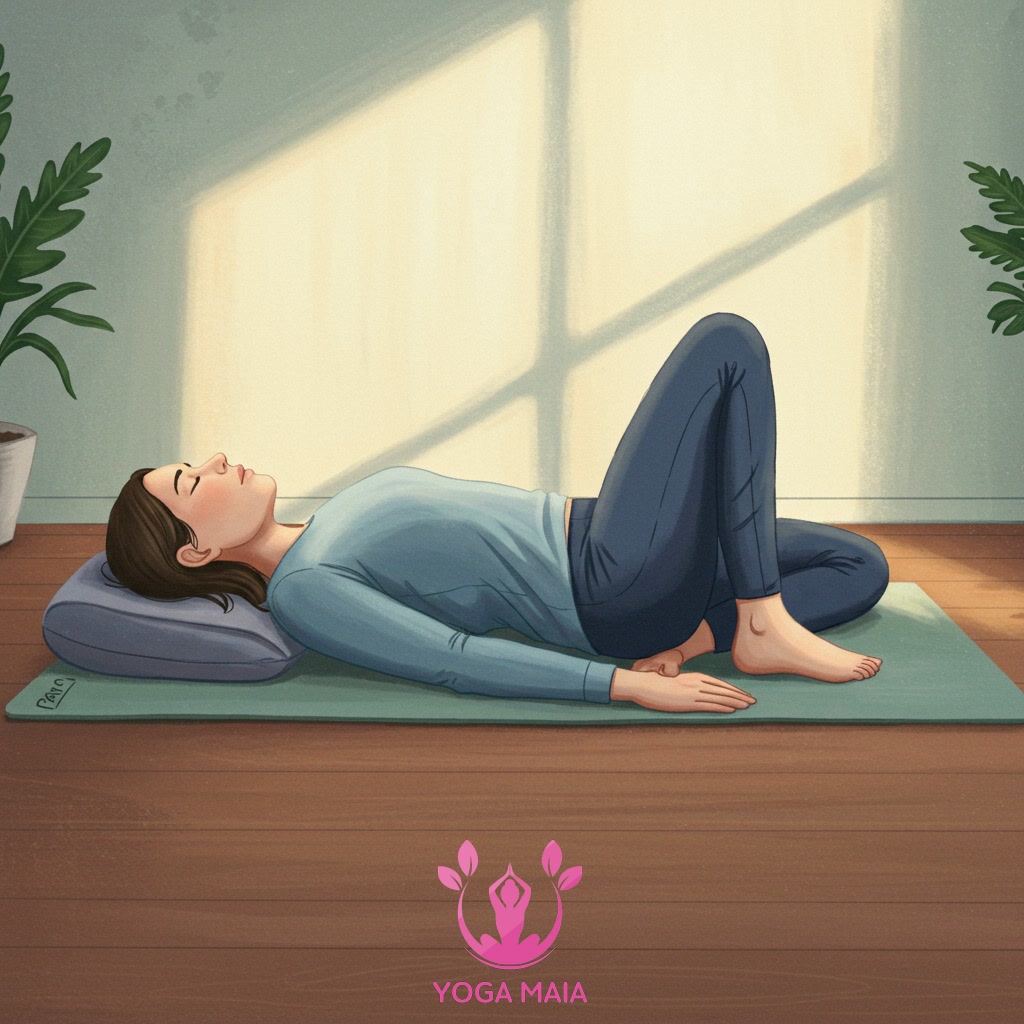
Section 2: Preparing for Your Yoga Nidra Practice
To fully embrace the benefits of Yoga Nidra, creating the right environment is key. Find a quiet space where you won’t be disturbed for the duration of the practice. Lie down comfortably on your back, perhaps on a yoga mat, a firm blanket, or even a bed, ensuring your body is fully supported. Allow your arms to rest by your sides, palms facing up or down, whichever feels natural. Your legs can be extended, or you can bend your knees with feet flat on the floor if your lower back feels strained. Consider using a pillow or rolled blanket under your head and knees for extra comfort. You might also want to cover yourself with a light blanket to stay warm, as body temperature can drop during deep relaxation. Close your eyes gently and prepare to become still.
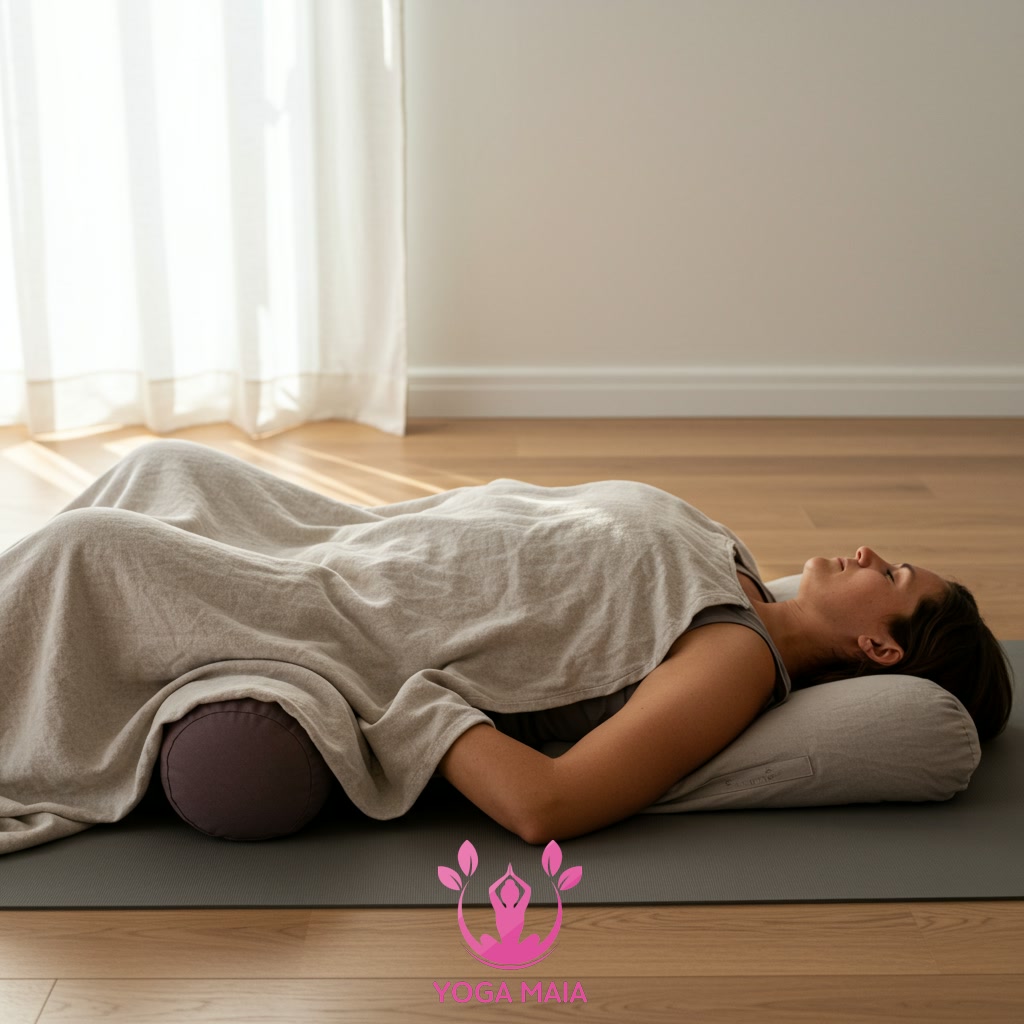
Section 3: Setting Your Intention (Sankalpa)
After finding your comfortable position and settling in, the next step in Yoga Nidra is to set your Sankalpa, or intention. This is a brief, positive statement or resolve that you repeat silently to yourself at the beginning and end of the practice. Think of it as planting a seed in the fertile ground of your subconscious mind while you are deeply relaxed. Your Sankalpa should be something you genuinely desire to manifest, stated clearly, concisely, and in the present tense, as if it is already true. It could relate to finding peace, healing, developing clarity, or any positive aspiration. Choose one intention that feels most important to you right now. Repeating your Sankalpa helps to focus your energy and align your inner state with your desired outcome, giving a gentle direction to the practice.
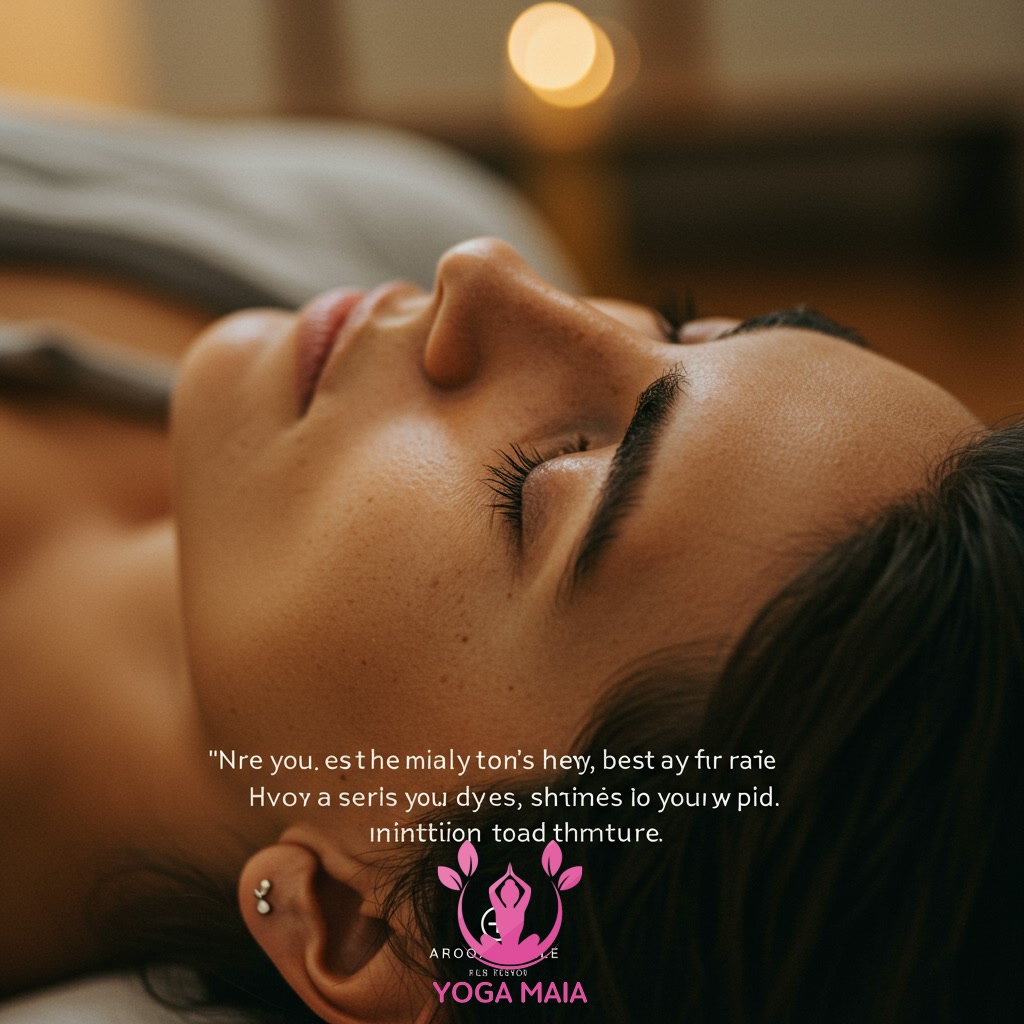
Section 4: Guided Rotation of Consciousness (Body Scan)
Following the establishment of your Sankalpa, the practice moves into the Guided Rotation of Consciousness, often referred to as a body scan. This systematic process involves bringing your awareness, without judgment, to specific points and areas throughout your physical body. Starting typically from the right side, then the left, and sometimes including a circuit through major and minor parts, you are guided to simply notice the sensation, or lack thereof, in each area as it is named. This is not about physically moving or tensing, but purely observing. By methodically shifting awareness, you interrupt the mind’s tendency to dwell on thoughts or external distractions, anchoring it gently in the present moment and fostering deep physical and mental relaxation as tension held within the body begins to release.
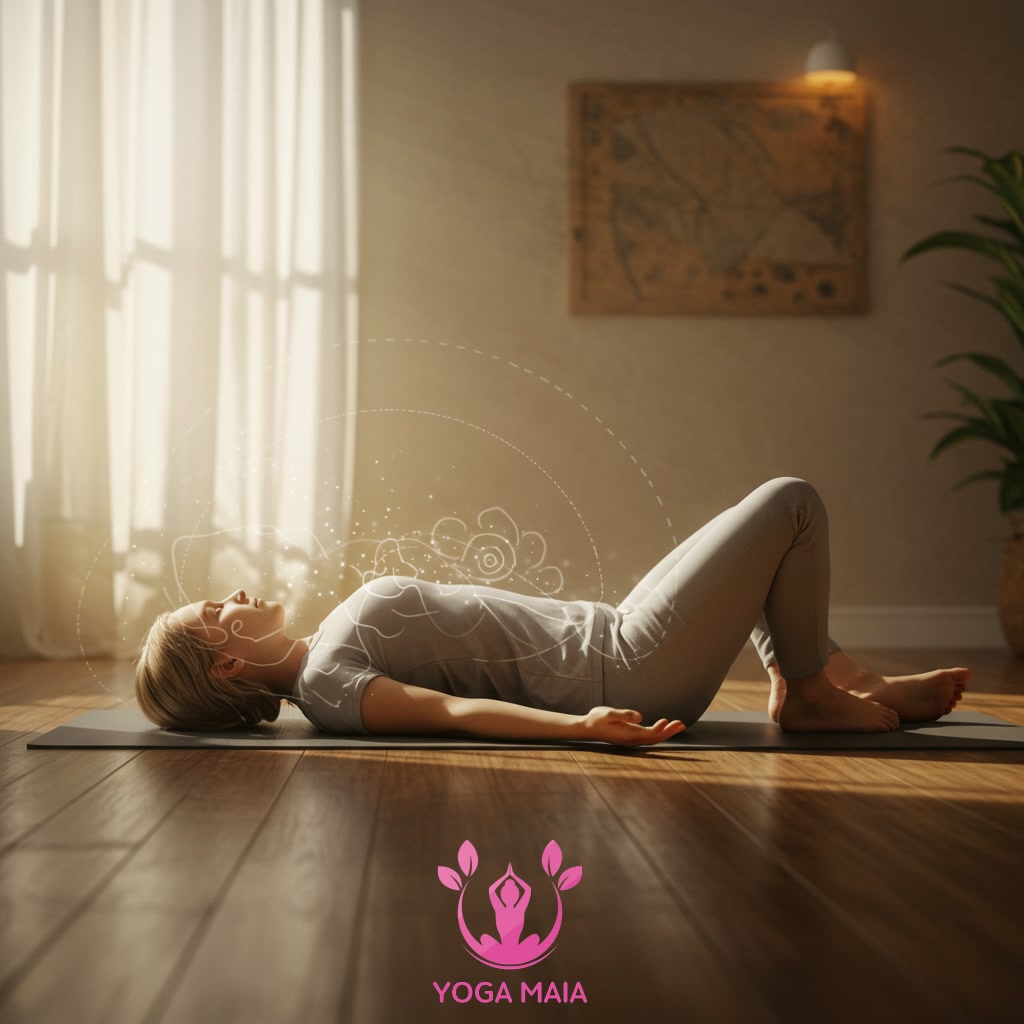
Section 5: Breath Awareness and Physical Sensations
Following the systematic rotation of consciousness through the body, the practice gently guides awareness to the breath. Without attempting to alter its natural rhythm, you observe the breath flowing in and out, perhaps noticing its subtle movement in the abdomen or chest. This simple act of witnessing the breath grounds the mind in the present moment. Subsequently, attention is directed towards any physical sensations that arise within the body – warmth, coolness, tingling, heaviness, or lightness. These sensations are acknowledged without judgment or analysis, simply as transient experiences. This phase cultivates deeper body awareness and further quiets the mental fluctuations, facilitating a state of profound stillness and surrender, essential for energy restoration.
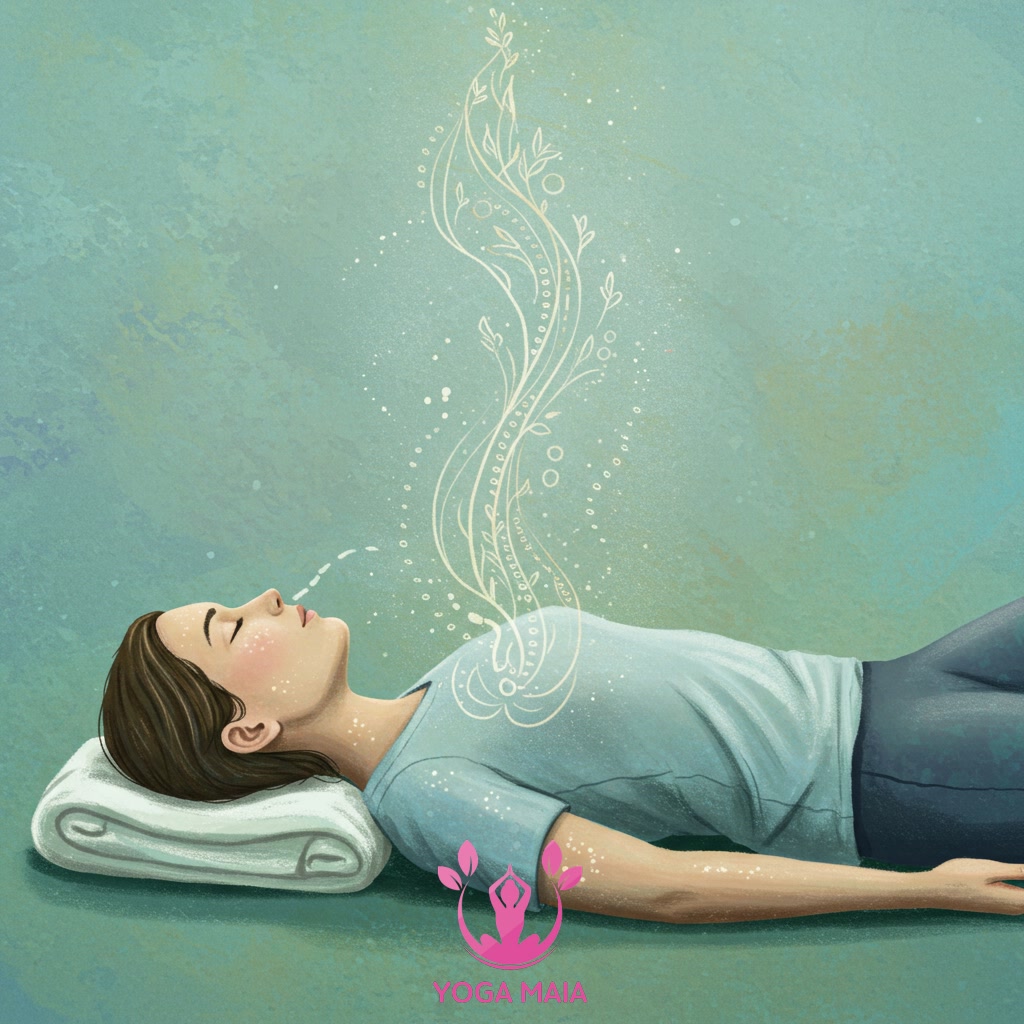
Section 6: The Visualisation Journey
Moving beyond the observation of the breath, the practice now invites you into the realm of visualisation. This stage is a guided journey for the mind, where specific images, symbols, or scenarios are presented. You are encouraged to simply witness these mental landscapes as they arise, without effort or analysis. The purpose is not to actively ‘see’ with your physical eyes or to try and control the images, but rather to allow them to unfold effortlessly within your inner awareness. This gentle exploration through guided imagery helps to engage the deeper layers of the mind, promoting profound relaxation and releasing subconscious tensions. It’s a passive process of receiving the visual suggestions, allowing the mind to drift and find a state of deep repose, further preparing you for the deepest levels of surrender in Yoga Nidra.
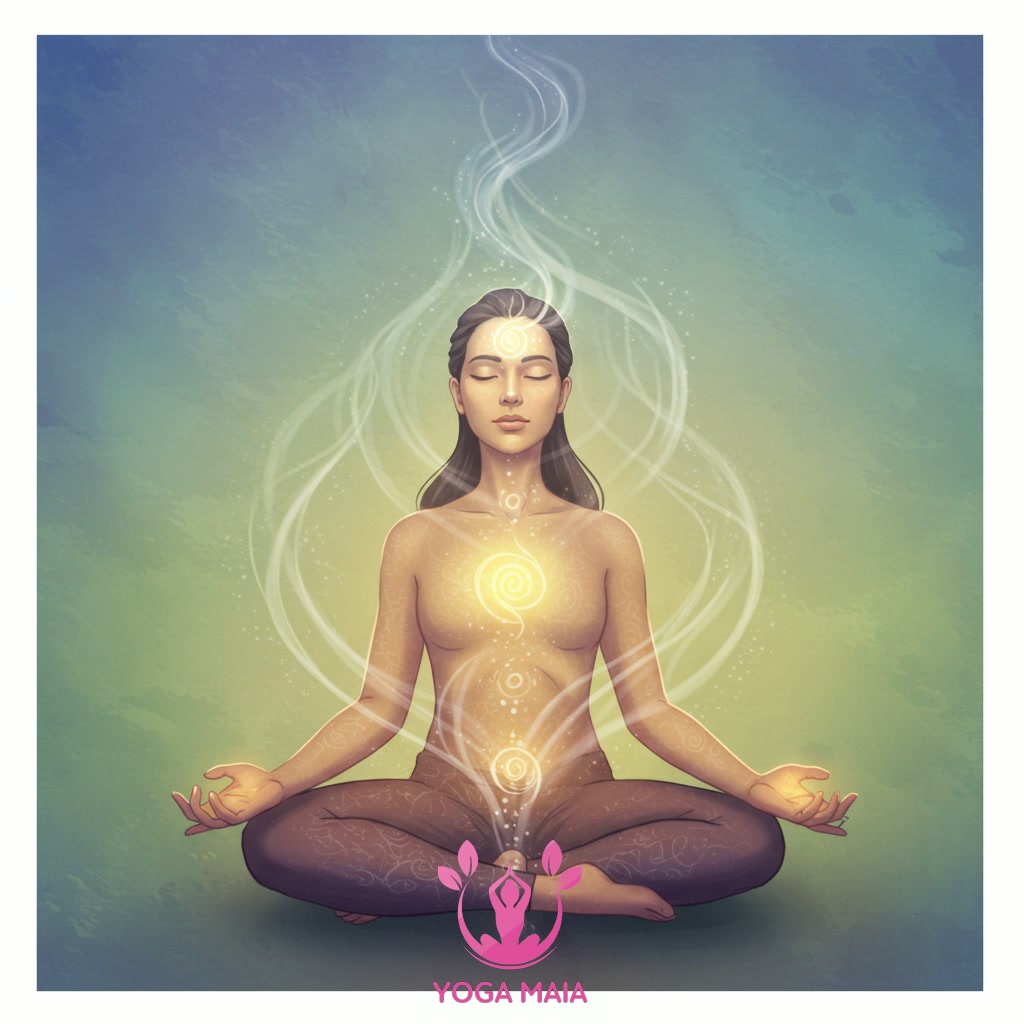
Section 7: Integration and Gently Awakening
This stage marks the gentle transition back from the profound state of relaxation you have cultivated. After the journey through visualisation, it’s time to slowly integrate the experience and return to external awareness. Begin by becoming aware of your physical body lying on the surface beneath you. Notice the contact points, the weight, and any sensations present without judgment. Gradually bring your awareness to the sounds around you, starting with the most distant and slowly moving towards those closer. Feel the air on your skin. There is no rush. Allow yourself to slowly deepen your breath. Wiggle your fingers and toes gently, bringing subtle movement back into your limbs. This phase is about allowing the benefits of the practice to settle in and preparing to move consciously back into your day, carrying the calm and restored energy with you.
